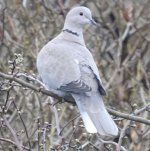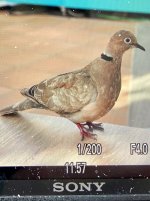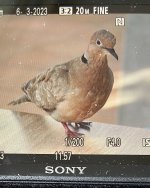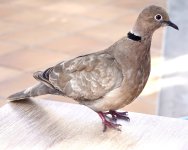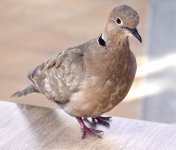KenM
Well-known member
As an aside, my first garden Collared Dove for perhaps 5 years several days ago, contrasting somewhat with this bird on FTV 3 weeks ago which in itself was markedly darker than the rest of it’s congeners.
Wondering whether it’s genetic or dietary?
Fair to say it was the dominant bird in the cafe.
Cheers
Wondering whether it’s genetic or dietary?
Fair to say it was the dominant bird in the cafe.
Cheers




